
Lapland Longspurs on February 23, 2015
I don't remember having seen a Lapland Longspur since Walt Childs and I discovered the first Virginia sighting of a Smith's Longspur foraging with seven Lapland Longspurs and some Horned Larks on February 23, 2015 at the Shenandoah Valley Regional Airport. In breeding plumage, both male and female Lapland Longspurs exhibit bold colors, but these colors can be quite muted in winter plumage, and some males and females may look similar.

Lapland Longspurs on February 23, 2015
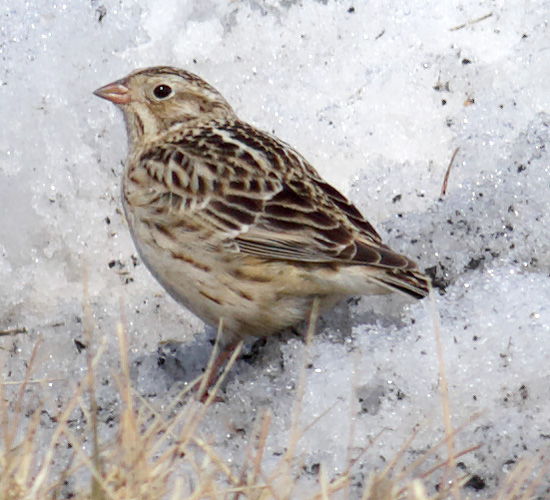
Smith's Longspur on February 23, 2015

Male and Female Lapland Longspurs, Shenandoah Valley, March 2013
I haven't been birding outside of Old Trail since the end of October (recuperating from some early November surgery), but am now at the point where I can get out birding for a while in nearby areas. When I read that Lapland Longspurs had been reported for a few days in a row along Guthrie Road in Stuarts Draft, I called Tink Moyer to ask is he wanted to meet me there. We had only been there for a few minutes when Huck Hutchens showed up with a spotting scope. He had seen two Lapland Longspurs there a couple of days earlier. One of them had bold coloring with quite a bit of white, and the other was more brownish - presumably a male and a female.
We had stopped along Guthrie Road not far from Route 608, where there is a cattle shelter up the hill from the road. The first four hundred feet or so was short stubble, with taller stubble leading up to the cattle shelter. Longspurs seem to prefer areas where there are cattle, perhaps finding insects that are associated with cattle waste?
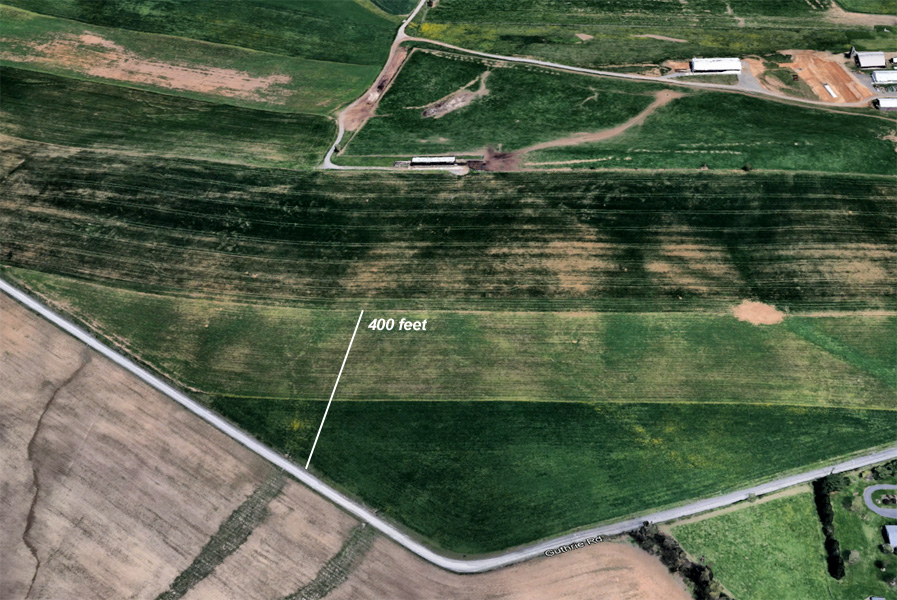
Along Guthrie Road
At first, all we saw was a large flock of Starlings near the cattle shelter, and then a flock of 50+ Horned Larks flew in, and when they landed in the stubble, they were almost impossible to see. Most of the time, the Horned Larks were at or near the boundary of the short and long stubble. The Horned Larks were a good sign, as Lapland Longspurs are often with them.

Horned Larks
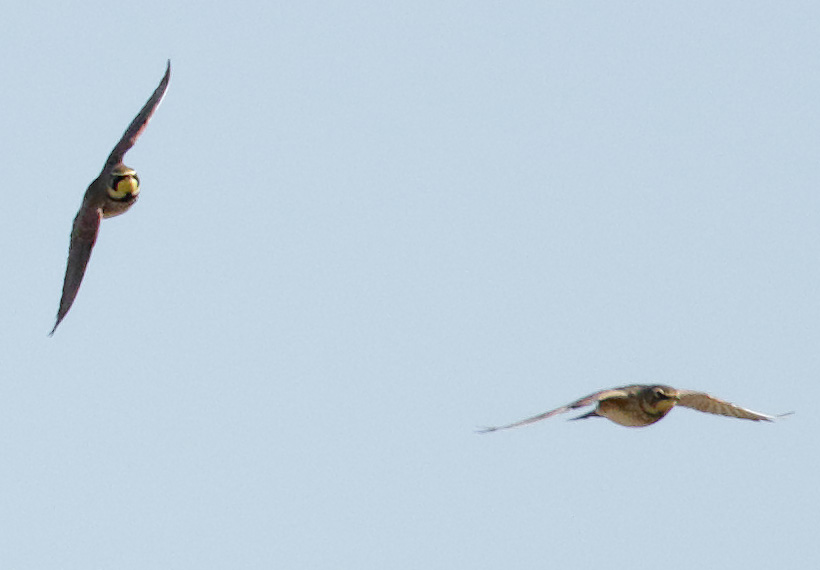
Horned Larks
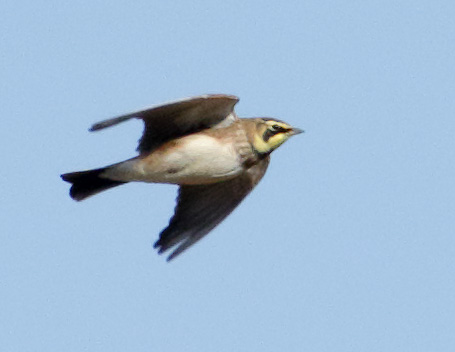
Horned Lark

Horned Lark
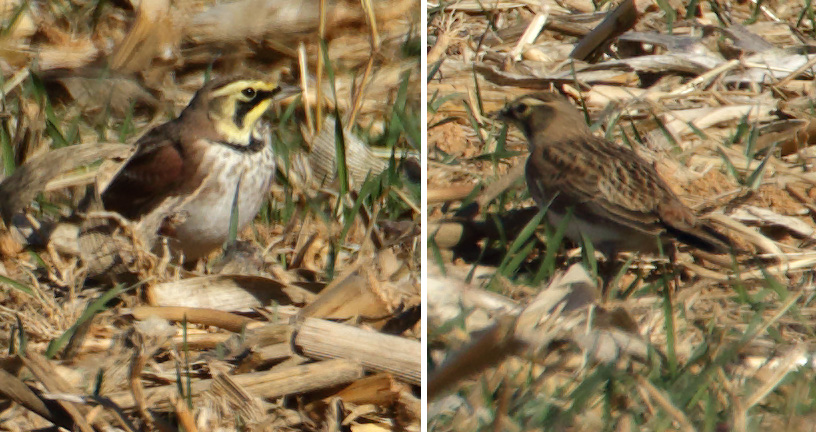
Horned Larks
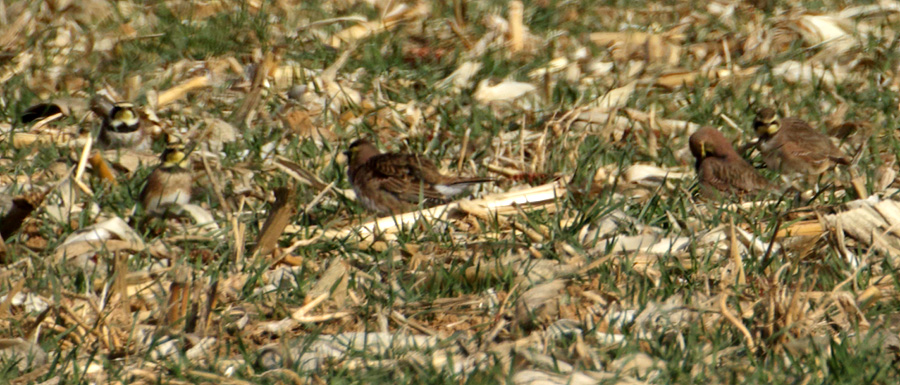
Horned Larks
After a while, Huck spotted a (female?) Lapland Longspur mixed in with the Horned Larks. But even with a spotting scope it kept disappearing in the stubble. I kept taking photos. It was a real challenge photographing these small birds mixed in with the stubble, usually 300 to 400 feet away. I could barely see the Horned Larks, much less get them in focus for a photo. I thought that if I took enough photos, I might get lucky and end up with a few that had a Lapland Longspur in it, so I took more than 400 photos. There was no way I could tell if I got lucky looking at my camera display in the field; I needed to examine all the photos on a large computer screen. I was lucky.
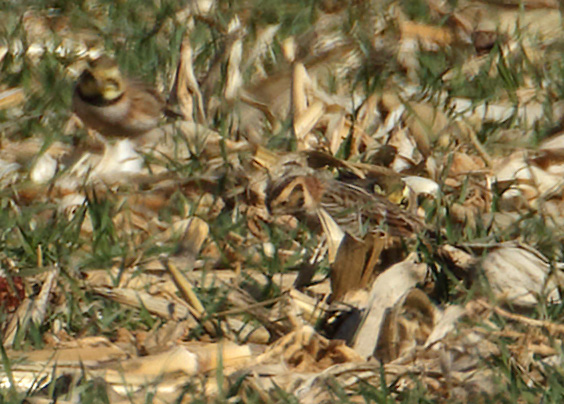
Lapland Longspur and Horned Lark
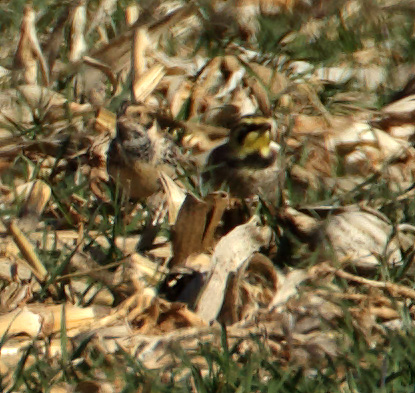
Lapland Longspur and Horned Lark

Lapland Longspur and Horned Larks
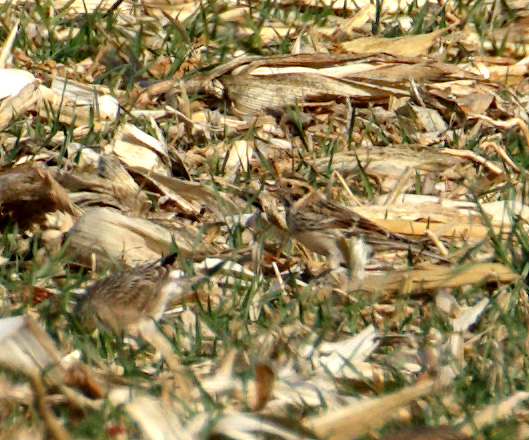
Lapland Longspur and Horned Lark

Lapland Longspur and Horned Larks

Lapland Longspur and Horned Larks
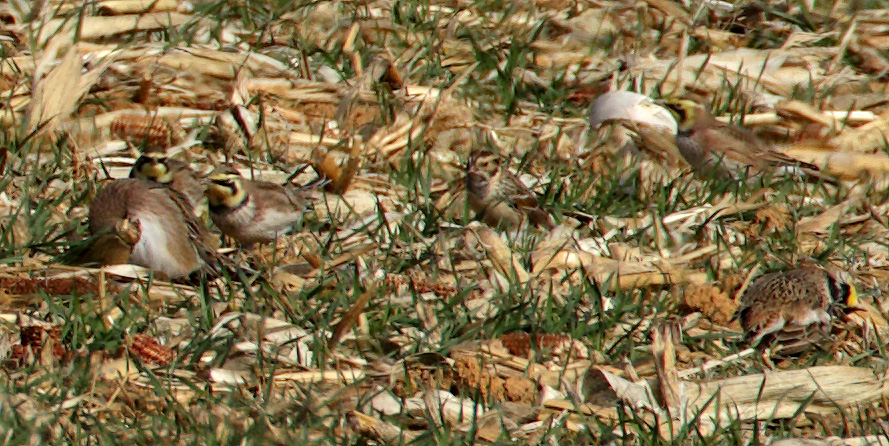
Lapland Longspur and Horned Larks
There were very few other birds there.
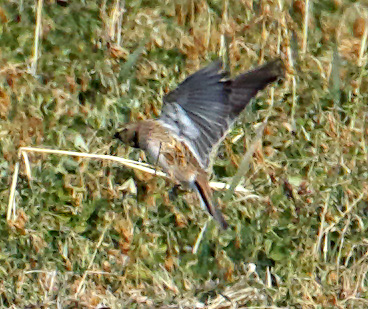
Horned Lark or American Pipit?

Eastern Meadowlarks
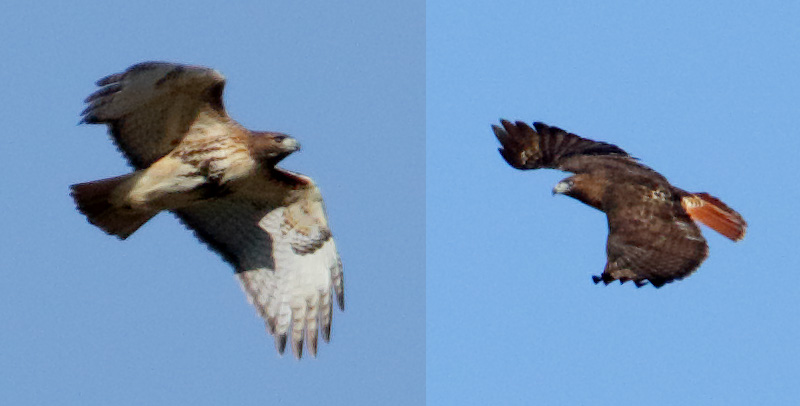
Red-tailed Hawk (northern race?)
On my way home, I saw a Cooper's Hawk along Hall School Road, and got a poor photo through my car windshield.
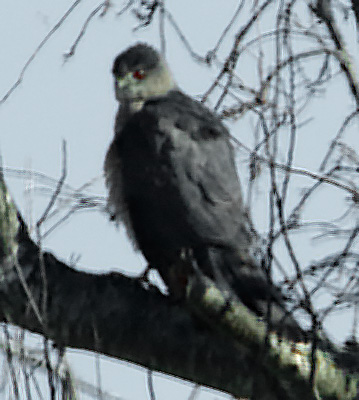
Cooper's Hawk
On a side note, earlier this week I started a Facebook group: Old Trail Naturalists. This group is dedicated to sharing the natural beauty of Old Trail; everything from the small animals and flowers to the vast universe that we can see from here. If there is anything of birding interest seen Old Trail, it will be in one of my reports posted on birding listservers. But if you want to share/learn about more than birding in Old Trail, feel free to send a join request via Facebook (and not via birding listservers or emails to me). We just started the group and already have 157 members.